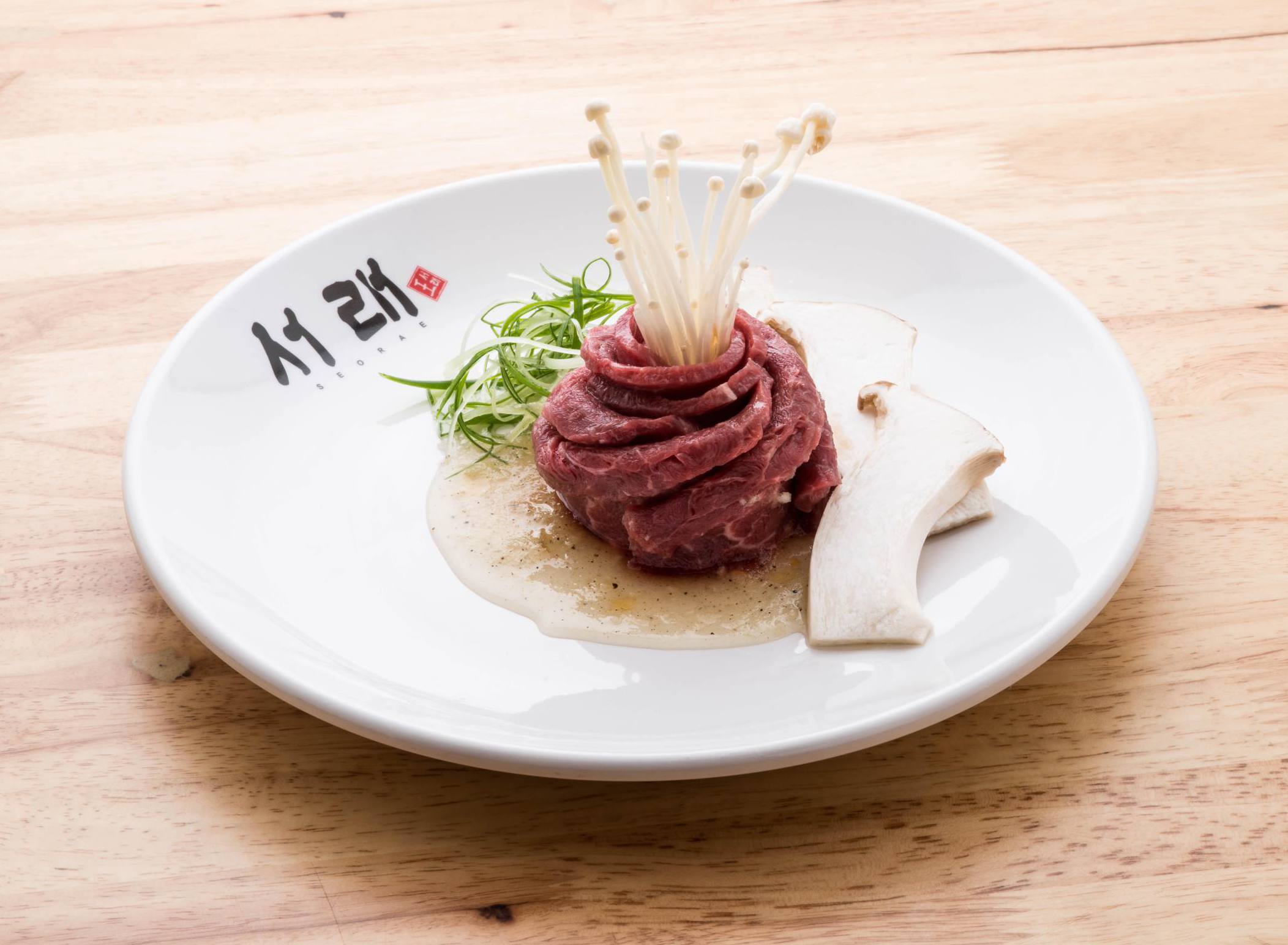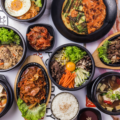Korean New Year must-haves
Jeon (Korean Pancakes): • Hanok by Masizzim’s Squid and Leek Pancake • Ajumma’s Kimchi Pancake and Seafood Pancake
Mandu (Korean dumpling): • Hongdae Oppa Korean Dining House’s Fried Mandu • Patbingsoo Korean Dining House’s Kimchi Mandu Jjigae
Signature Beef Dishes • Hanok by Masizzim‘s Soy Beef Rib Stew • Seorae Korean Charcoal BBQ’s Chilled: Gwangyang Bulgogi
Japchae (Glass Noodles With Vegetables) • Patbingsoo Korean Dining House’s Japchae • Seorae Korean Charcoal BBQ’s Japchae
Saehae Bok Mani Badeuseyo, Happy Korean New Year! Korea’s biggest national holiday and grandest feast of the year is just round the corner. Known as Seollal, it falls on the same day as Chinese New Year – 12 February this year.
Seollal is a family festival. Koreans from far and near travel back home, and youngsters receive gift money in white envelopes from elders, along with blessing for health and marriage.
If you aren’t already a Korean aficionado, the festive food will certainly make a convert of you. Traditionally, a table-full of New Year food is prepared as an ancestral offering. While such rites are less common in modern Korea, you may still enjoy these festive foods, richly laden with symbolism.
In fact, the Koreans take their New Year feasting so seriously that it is a source of great stress for Korean wives heavily involved in assisting their mother-in-laws with preparing these decadent spreads. The festive period has been known to be so stressful that the term “myeongjeol divorces” has been coined to refer to divorces that occur after Korean New Year.
Fret not! Here in Singapore, you can indulge in many of these traditional foods hassle-free, prep-free and stress-free. So if you’ve had one too many yusheng platters, expand your Lunar New Year repertoire with these irresistible Korean food delivery options on Oddle Eats.
Let them eat cake
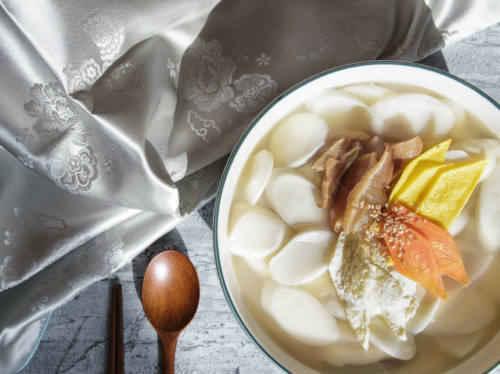
The first morning of Lunar New Year, Koreans typically trade their usual staple of rice for Tteokguk (Korean rice cake soup). Like a birthday cake, Koreans believe that they grow one year older after polishing off a bowl of this Korean rice cake soup on Lunar New Year. Hence, one tongue-in-cheek way to ask someone his age is to say: “How many bowls of tteokguk have you eaten?”
While Tteokguk is currently not available for delivery in Singapore, it deserves first place on this list for its rich symbolism. It was first recorded in Dongguk Sesigi, a book of Korean customs in the 19th century. Interestingly, it is regarded as a highly auspicious dish. The thinly sliced rice cakes resemble old-style Korean coins, known as yeopjeon, to symbolise prosperity. The white colour of the rice cake signifies purify of the body and mind, and a fresh start for the New Year.
Different regions offer their own delicious version. In Seoul, it comes in a traditional beef broth; on Jeju Island, seaweed is a key ingredient; and in the Jeolla Province, it comes in a chicken-based soup.
“In Korea, it is believed that one cannot become older until he or she has eaten a bowl of Tteokguk during the New Year.”
Dominic Tan, Director, Ajumma’s
Party-perfect pancakes
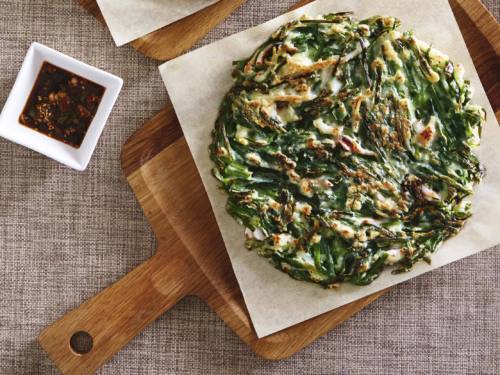
Who knew an ancestral worship staple could taste so delicious. Jeon (Korean pancakes) are thin, crispy, savoury and all-round crowd-pleasers. If you love Korean BBQ, you’d know how irresistible this side dish is.
Two of the most common options are gimchijeon (kimchi pancakes), and haemulpajeon (seafood pancakes). Other popular versions feature white fish, mushroom, zucchini and mung beans.
Try: Hanok by Masizzim’s Squid and Leek Pancake ($16.60); and Ajumma’s Kimchi Pancake ($10.90) and Seafood Pancake ($13.90).
Auspicious dumplings
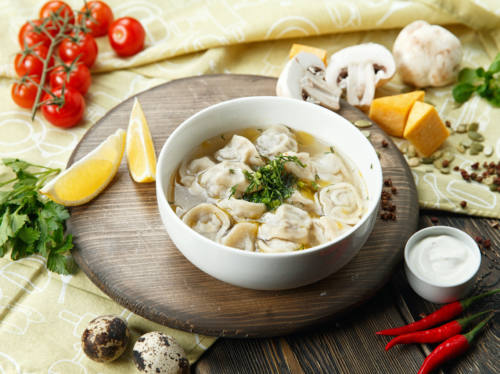
One reason Mandus (Korean dumplings) are so popular during Korean New Year is because they represent multiple blessings and good fortune wrapped in each bite. Each dumpling contains a variety of ingredients. The filling often consists of ground pork or beef, cabbage, garlic, and sometimes, kimchi, Chinese chives, scallions, and mung beans.
In Korean culture, the prepping ritual is extremely labour intensive. Families would first prepare the dough and ingredients, and then come together to wrap these dumplings. This multi-day activity adds to the festive ambience and creates a rich bonding experience.
Mandus are typically steamed or boiled, though they can be fried as well. In places such as North Korea, they are added to soup and enjoyed as an alternative to tteokguk in a dish known as Manduguk.
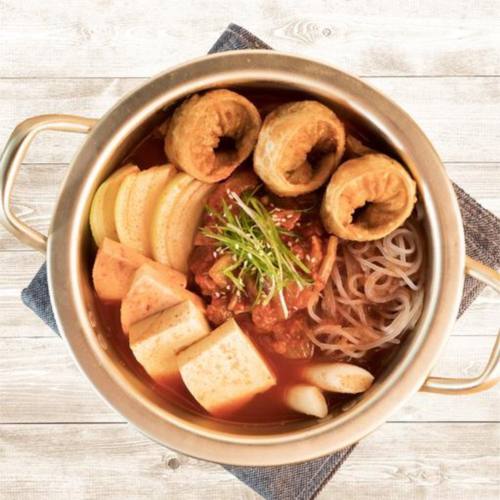
Try: Hongdae Oppa Korean Dining House’s Fried Mandu, ($4.90), fried kimchi pork dumplings, Patbingsoo Korean Dining House’s Kimchi Mandu Jjigae ($13.90), deep-fried kimchi pork dumplings, luncheon meat, rice cake, tofu and glass noodle in kimchi broth.
A celebratory moo-d

Historically, beef has always been expensive in Korea. Even today, Korean beef prices are higher than in many other countries. Hence, beef is often reserved as a celebratory food and a Korean New Year staple.
Galbi (beef short ribs), in particular, is a special occasion food. One popular dish is Galbi Jjim (braised beef short ribs). It is cooked over a long duration for perfect tenderness and absorption of the sweet-savoury marinade.
“Galbi-jjim is a special dish to many Koreans because traditionally, it is served only to the king. It is more widely enjoyed by Koreans now, but it is eaten usually during special occasions because it is still regarded as a luxury dish.”
Daniel Hu, Research & Development Manager, Hanok by Masizzim
Another delicious beef dish is the bulgogi, barbecued sweet-savoury beef charred to perfection.
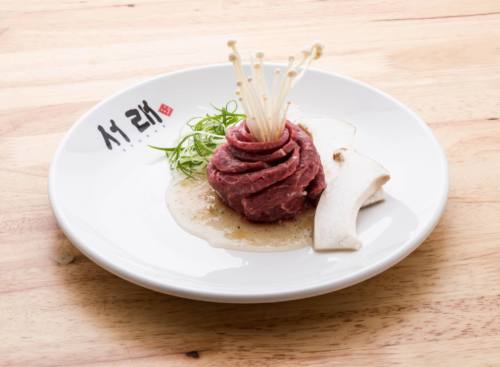
Try: Hanok by Masizzim‘s Soy Beef Rib Stew ($21), slow-cooked for tenderness; and Seorae Korean Charcoal BBQ’s Chilled: Gwangyang Bulgogi ($28.90), marinated prime beef oyster blade, served with mushrooms.
Royal greens
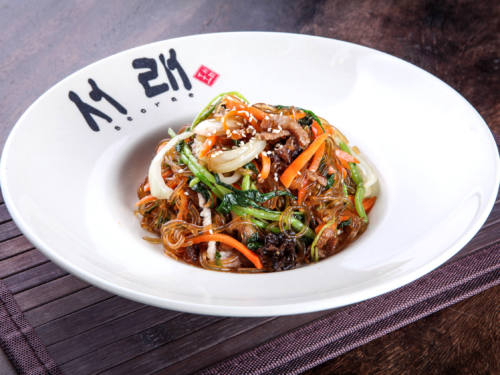
If you think Japchae sounds an awful lot like our local chap chye, Hokkien for “mixed vegetables”, you are spot on. This Korean dish name also translates to mean “mixed vegetables”. But it has nobler origins, having been first served as a gift to the king during Korea’s Joseon Dynasty.
Today, this dish typically features stir-fried Korean glass noodle with vegetables, and sometimes meat, such as beef. Korean glass noodles are made of sweet potato starch so this dish is gluten-free. It is usually served as a side dish during Korean New Year.
Try: Patbingsoo Korean Dining House’s Japchae ($11.90), glass noodles stir-fried with fried pork belly and fresh vegetables; and Seorae Korean Charcoal BBQ’s Japchae ($15.90), rice noodle stir-fried with pork or beef and fresh vegetables.
Dessert is the best medicine
Just like the Chinese enjoy Yuan Xiao glutinous rice balls on the 15th day of Chinese New Year, Koreans have their own version of sweet rice dessert consumed on the very same day during the first full moon of the lunar year.
Yaksik is a sweet rice treat featuring traditional medicinal ingredients such as anti-ageing jujube and vitamin-rich chestnut, and believed to be health boosting. This delightful dessert is usually seasoned with honey, brown sugar, sesame oil, and soy sauce, and wraps the Lunar New Year festivities on a sweet note.

